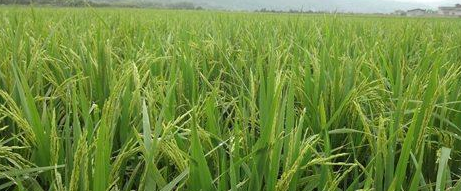The field management of late rice before and after heading has a great effect on high yield of rice. The main target of this period is to control the stalks, reduce the degradation of spikelets, increase the rate of ear formation, promote the large grains and large grains, and achieve high quality and high yield.

First, timely and moderate drying
The main functions of the sun-dried field are to control cockroaches, strong roots, strong stalks, refine leaves, and reduce pests and diseases. In the 15 days after the late rice transplanting, stick to the "three look" to see the seedlings, the second to see the soil, and the third to see the weather. Generally early morning and early sun, late and late. The basic seedlings are rich, the soil is fertile, the growth is strong, the leaves are dark green, the leaves are bent, and should be properly sun-dried; the basic seedlings are less, the growth is insufficient, the leaves are lighter, and the sun should be light or only exposed. In rainy weather, the drying time should be longer; the sunny sun should be shorter. The sun should reach: the leaves are faded, the leaves are straight, the white roots appear, the cracks are seen in the fields, and the feet are not trapped in the fields. Note: During the nursery period and the early stage of tillering, there is more rain and less light, which causes the quality of the seedlings to be biased. The early tillering is less, and it is better to delay the sun and lighten the sun.
Second, early Shiqiao application of panicle fertilizer
Early application of panicle fertilizer can not only strive for a large number of secondary tillers to form panicles, but also increase the number of effective panicles; and it is advantageous for the seedlings to enter panicle differentiation after absorbing panicle fertilizer, promote the differentiation of spikelets and branches, and increase the number of grains per panicle. Spike fertilizer should focus on seedling stage and insufficient growth in the early stage of tillering. In accordance with the field of early application, it is necessary to seize the opportunity to apply the ear fertilizer to make up for the lack of growth in the early stage. Panicle fertilizer was applied in late August, two or three days before the ear panicle differentiation. Generally, 2.5 kg of urea is applied per 667 square meters plus 7.5 kg of compound fertilizer. It is also possible to apply 7.5 kg of urea or 10 kg of compound fertilizer alone. For the fertile soil, the growth is too strong, the field with poor effect on the drying field should be applied late, lightly applied or not applied.
Third, scientific management of water
After re-watering in the field, the gap irrigation method should be adopted in the shallow-water layer, and the “clear water plate†should be maintained as much as possible. The principle of total pipe water in the field at the earing stage is “live water, strong water, heading, dry and wet seedâ€. When applying panicle fertilizer, there should be a shallow water layer, and let the water layer dry naturally, then re-fill the shallow water layer. During the rice ear formation period, it is the period of most water demand in rice, especially in the meiosis stage, which is more sensitive to water. In mid-September, the late rice enters the period of meiosis and concentration. The shallow water layer should be kept for 5 days to 7 days. After the meiosis period, the shallow water irrigation method is adopted, that is, after the shallow water layer is naturally dried, the new water is refilled. To "the water does not see the front water", in order to facilitate the coordination of water, fertilizer, gas, heat in the soil. Dry and wet during the fruiting period, maintain the vitality of the root system, extend the photosynthetic function of the leaves, and guard against the premature water loss at the later stage, causing the leaves to decay prematurely.
Fourth, prevention and control of pests and diseases
The main pests and diseases before and after heading of late rice include rice blast, sheath blight, rice leaf roller, rice stem borer and rice planthopper, etc., and measures should be taken to prevent it in time. Control rice blast can be used 40% per 667 square meters, 50 grams of water, 50 grams of water spray; 6.7 square meters per 667 square meters can be used for 5% Jinggangmycin WP 150 grams or 5% Jinggangmycin 150 ml 75 kg of water spray; control rice leaf roller, three cockroaches per 667 square meters can be used 25% insecticidal double 200 ml spray 75 kg of water; control rice planthopper per 667 square meters available 20% phlegm 50 grams Spray 50 kg of water.
Medical Trolley,Anesthesia Emergency Trolley,Anesthesia Medical Cart Trolley,Abs Medical Emergency Cart
Medton Medical , https://www.medton.cn